This science experiment using ice and salt is a fantastic demonstration of why salt is used to de-ice roads. It’s also a fun science magic trick!
When salt is spread on the road in winter, it dissolves in water on the surface and lowers the freezing point of the water. This means the outside temperature needs to be around -4oC ( the actual temperature depends on the concentration of salt in the water ) rather than 0oC for ice to form. If there’s already ice on the surface, the salt will again lower the freezing point, and the ice will melt.
In this ice and salt demonstration, an ice cube is lifted from a glass of water attached to a string! Salt is used to melt the ice, which then refreezes around the string.
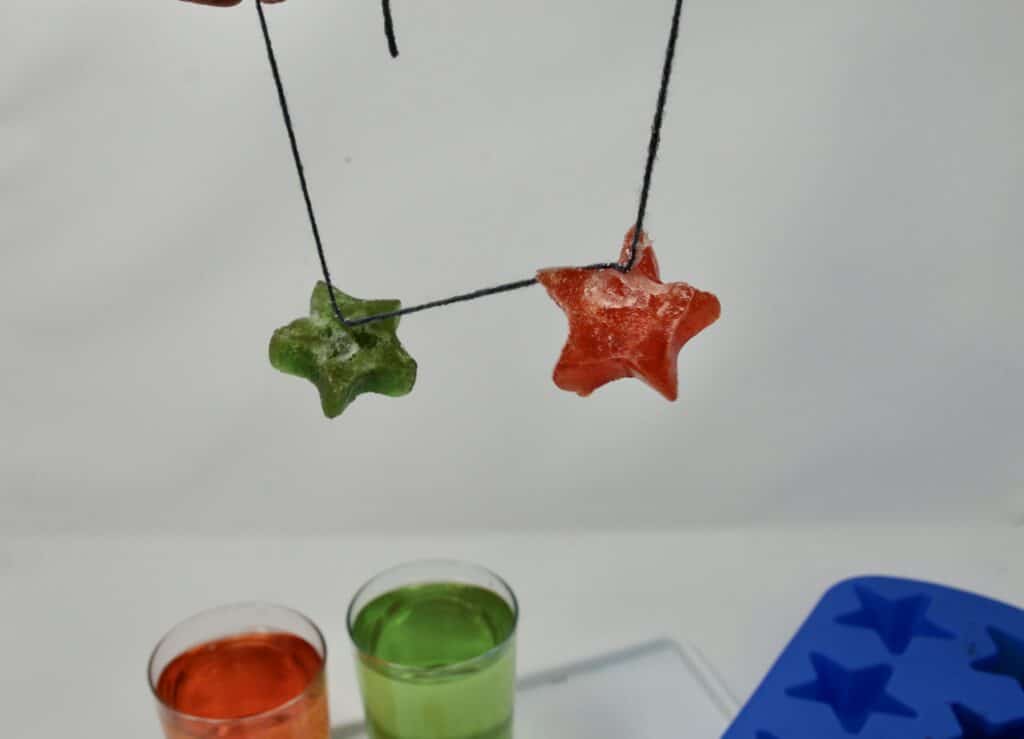
How to lift an ice cube with string
You’ll need
Glass or jar
Water
Ice cube tray
Food colouring – optional
Salt
String or wool/yarn
Freezer
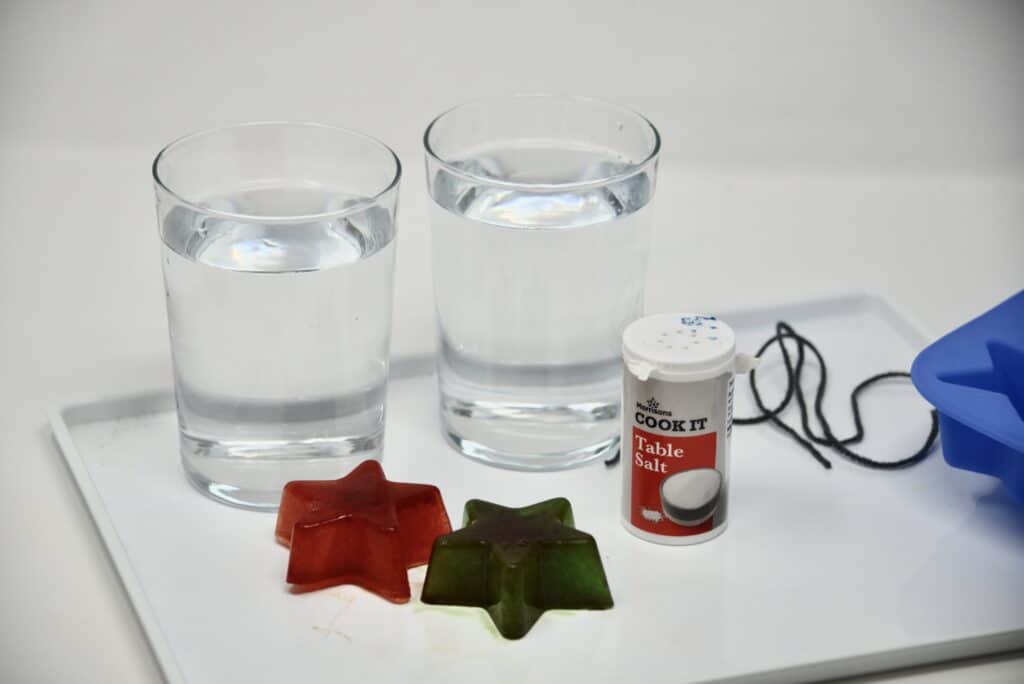
Instructions
Pour water ( this can be coloured with food colouring ) into an ice cube tray and place in a freezer until frozen.
Fill one or more jars with water to almost the top.
Carefully place an ice cube into each glass and top it up with water, so it is almost full.
Place a small piece of string over the top of the ice cube and sprinkle salt over where the string sits on the ice cube.
Leave for 1 minute.
Carefully lift the string from both sides; the ice cube should be attached!
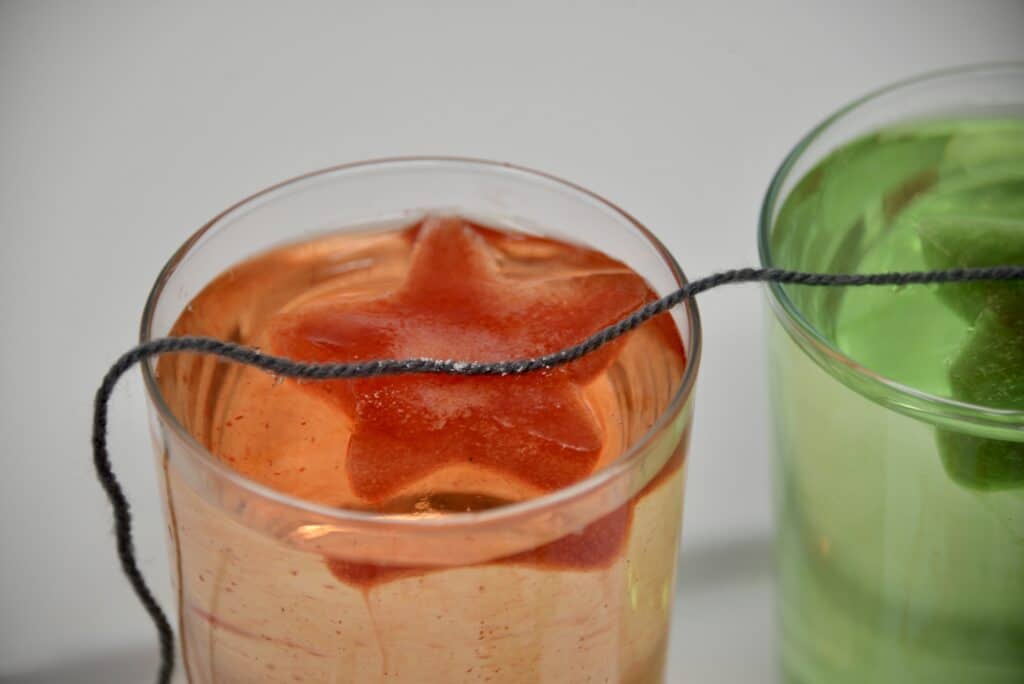
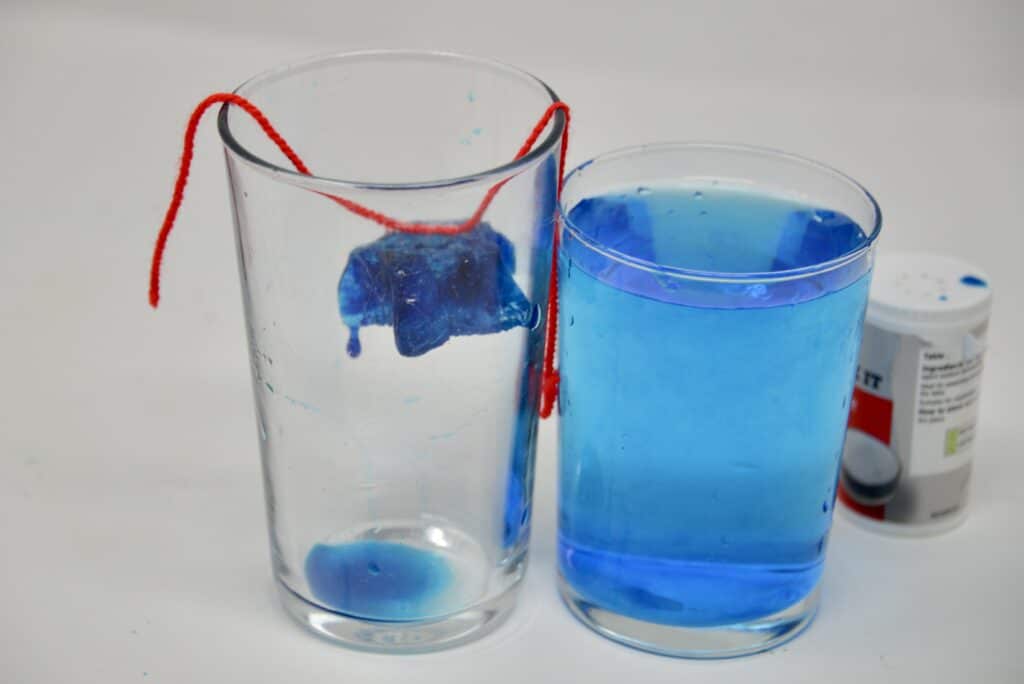
How does this science experiment work?
The freezing point of water and melting point of ice is usually 0oC.
As soon as the ice is placed in the water, it starts to melt as the water temperature is above 0oC. Adding salt lowers the freezing point of water, making some of the ice melt. The ice melts and refreezes around the string, causing it to stick to the ice.
Extension tasks
Try sugar instead of salt
Try using sugar instead of salt; does it have the same effect? You should find adding sugar also makes the string stick to the ice. This is because, generally, impurities in water lead to freezing point depression ( a lowering of the freezing point ).
Does saltwater freeze?
Make a saltwater solution and pour it into an ice cube tray. Fill a separate compartment with water containing no salt and compare how long the two take to freeze. Depending on the concentration of the salt water, it should take longer to freeze or potentially not freeze.
More ice and salt science experiments
Make ice cream from milk using the cooling power of ice and salt. If you don’t fancy ice cream, the same technique works for making fruity slushy drinks.
Cool a drink very quickly on a hot day by placing it in a container of ice, salt and water!
Make frost appear on the outside of a tin can using ice and salt.
Find out if salty water freezes with a simple science investigation.
Find out how road gritters know when to grit the roads in this article from the Met Office.
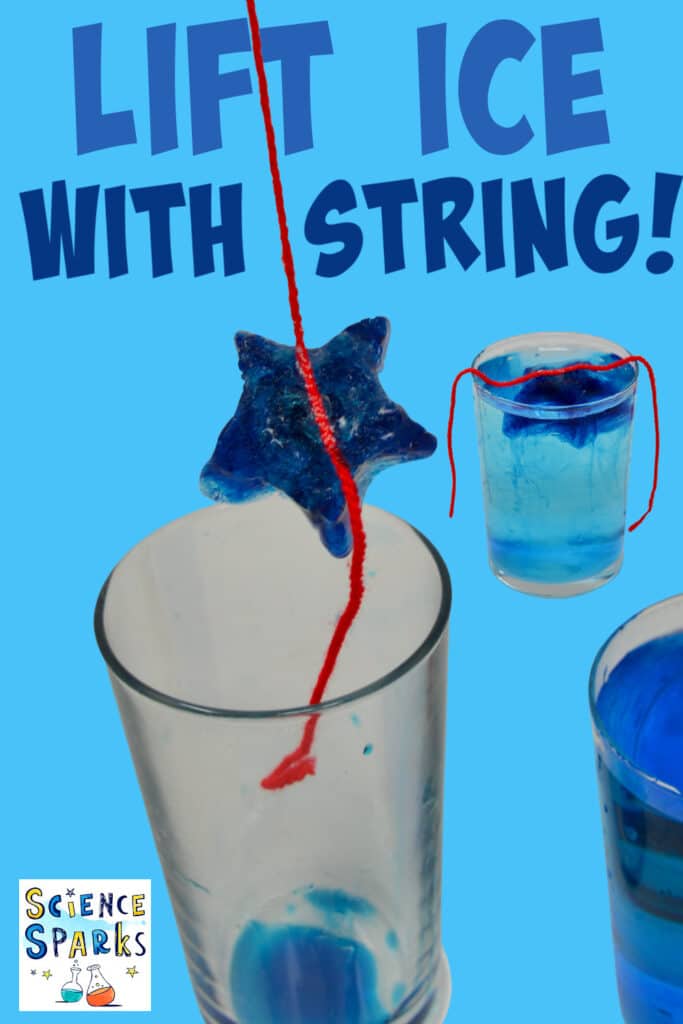
Science concepts
Melting
Freezing
Freezing point depression
Changes of state
Last Updated on May 16, 2024 by Emma Vanstone

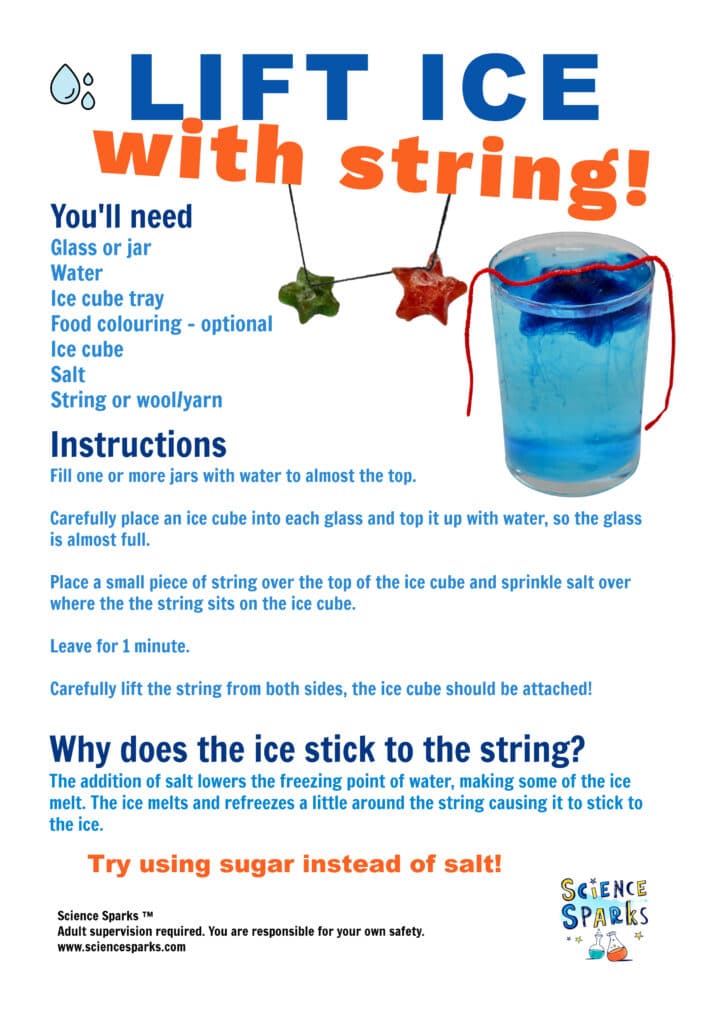
Leave a Reply